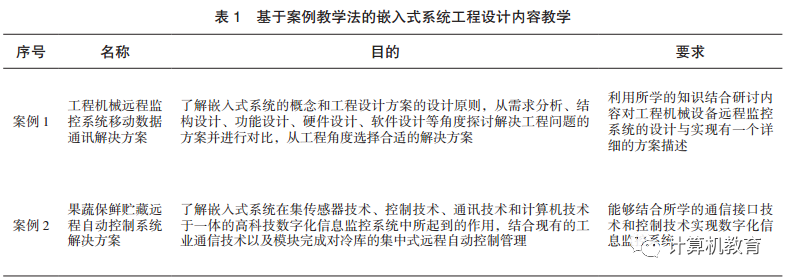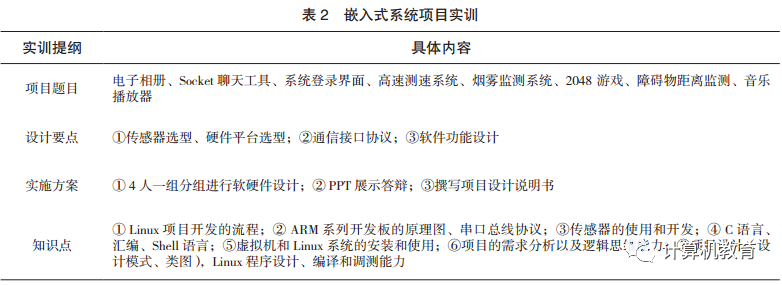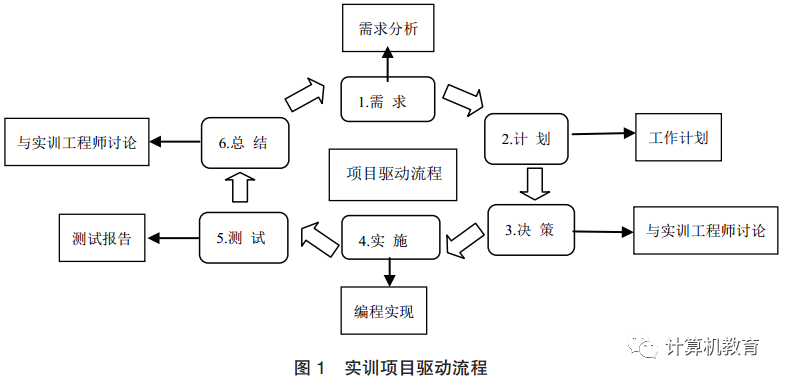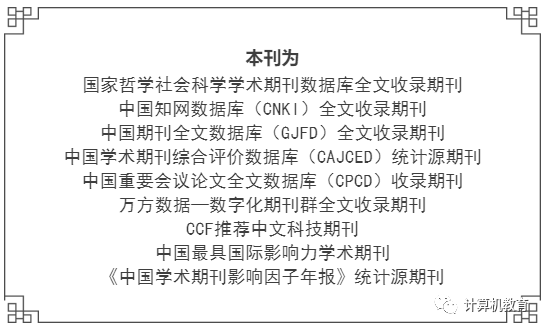0 Introduction
The Internet of Things (IoT) is an important part of the new generation of information technology, representing an advanced form of the combined development of traditional embedded systems and the Internet. The IoT generates big data and gradually forms an era of technological explosion characterized by the overlay of emerging technologies such as cloud computing, artificial intelligence, blockchain, and virtual reality. Embedded technology serves as the foundation for IoT development, aiming to achieve control and data processing operations for IoT systems through embedded technology. In other words, the IoT is the networking of embedded products. Embedded system technology has been widely applied in various fields including national defense, the national economy, and social life, providing technical solutions for intelligent control and management in various places such as enterprises, military, offices, laboratories, and personal homes. In this context, talents proficient in IoT embedded technology will undoubtedly be highly valued by application-oriented universities and high-tech enterprises, which means that such talents must not only possess solid discipline and professional foundational knowledge but also have strong practical skills in technology and engineering.
1 Necessity and Goals of Embedded System Course Reform
Currently, major universities in China offer embedded system courses in automation, computer science, electronic information, and other related majors, with many institutions also offering IoT programs that include embedded courses. Due to the prerequisite knowledge required for this course, such as microcomputer principles, C language, and operating systems, it is primarily offered in the second semester of the junior year or the first semester of the senior year. The teaching method mainly consists of theoretical courses supplemented by experimental courses, but the teaching content lacks a unified standard, focusing either on conceptual and foundational introductory teaching or emphasizing ARM architecture and instruction systems or leaning towards embedded operating systems with a focus on Linux and application development [1]. Additionally, there is a significant disparity in students’ foundational knowledge; some are from computer science majors with solid software knowledge but lack hardware knowledge, while others are from automation or electronic communication engineering majors with extensive hardware knowledge but insufficient software engineering and operating systems knowledge. Clearly, for a practical course like embedded systems, the traditional teaching method, which emphasizes theoretical teaching with supplementary experimental teaching, is insufficient to meet the training needs for practical hands-on skills in embedded systems. Currently, practical teaching in universities has not received adequate attention, with verification experiments being more prevalent and design and comprehensive experiments being less common, failing to establish a complete practical teaching system that integrates with theoretical teaching, thus leading to the quality of talent cultivation being unable to meet the demands for application-oriented talents. At present, the assessment of course performance mainly relies on written exams, but for practical courses with a strong emphasis on hands-on skills, it is challenging to measure students’ true learning abilities solely through theoretical exams, making it difficult to evaluate the effectiveness of the course and even more difficult to encourage students to improve their hands-on skills. Therefore, guiding students to flexibly apply embedded system knowledge to solve specific problems has become the goal of course reform.
In recent years, engineering education professional accreditation has become the basic system for cultivating talents in engineering majors in China. Reforming and innovating the practical system of embedded system courses based on the concepts and standards of engineering education accreditation can enhance students’ application and innovation abilities [2]. Literature [3] proposes reconstructing teaching content, reforming teaching methods, and improving assessment and evaluation methods based on the OBE model, but each school has specific conditions, and the levels of students are also different. Therefore, reforms need to be tailored to the characteristics of the students and the actual situation of the courses at each school. Literature [4] proposes a series of practical teaching reform measures based on the requirements of engineering education accreditation according to the characteristics of embedded courses, with the cultivation of engineering practical abilities becoming one of the goals of embedded system courses. Literature [5] suggests a blended teaching approach combining online and offline methods and project-based teaching methods to cultivate students’ practical skills in response to issues encountered in embedded system courses. Literature [6] reformed the knowledge system, teaching methods, and innovative practices of embedded systems from the perspective of system capability cultivation. Literature [7] addresses the disconnection between theory and practice by adjusting classroom teaching content in conjunction with experimental content. Literature [8] reformed the curriculum teaching system, experiments, and practical teaching with the goal of cultivating innovative abilities.
To resolve the contradiction between the one-sidedness of traditional teaching models and the comprehensive requirements of the industry for talent, the author collaborated with Guangzhou Yueqian Communication Technology Co., Ltd. to carry out school-enterprise cooperative collaborative education, further implementing the spirit of the “Implementation Opinions of the General Office of the State Council on Deepening the Reform of Innovation and Entrepreneurship Education in Higher Education Institutions”, advancing the integration of industry and education, and exploring embedded system course reforms that align with the actual situation of the school.
2 Reform Measures for Embedded System Courses Under Collaborative Education Model
2.1 Improvement and Design of Theoretical Teaching Content
2.1.1 Introduce an Overview of Embedded Courses
During the teaching process, introduce information on professional frontiers to cultivate students’ basic professional qualities, helping them become familiar with the development of industries related to their major, specific work modes, talent quality requirements, and average salary levels, laying a good foundation for their future career choices and life planning. Set relevant learning content, learning hours, and learning objectives based on the cutting-edge developments in embedded systems, thereby driving students to understand new industry dynamics and learn cutting-edge knowledge and emerging technologies. By coordinating with partner enterprises, dispatch embedded system engineers to the school, where corporate mentors will teach the course overview and interact with students in class, allowing students to initially engage with embedded courses through technical analysis and understand the key points of the course; showcase technical achievements to give students a sense of the general application scope and fields of embedded technology, clarifying its purposes and application methods; at the same time, introduce corporate culture and industry dynamics to broaden students’ horizons and help them understand their majors and employment directions, avoiding disconnection between theory and practical application.
2.1.2 Change Traditional Homework Assignments to Embedded System Project Design
The embedded system course is application-centered, with strong practical and engineering characteristics, often making it difficult to help students understand and master course knowledge points through traditional homework assignments. Therefore, connect theoretical knowledge closely with actual needs and the latest technologies, conducting thematic research and discussions based on real engineering background problems. According to engineering accreditation requirements, train students to design and develop system solutions, utilize modern tools, manage projects, and collaborate effectively in teams, helping them understand and apply classroom knowledge to solve practical problems, stimulate learning interest, and enhance their hands-on ability to analyze and solve problems independently.
2.1.3 Determine Course Content Based on Multiple Mainstream Textbooks
Due to the rapid advancements in embedded technology and fast iterations of software and hardware, do not confine to a single textbook but select multiple mainstream reference textbooks, teaching important chapters from them, keeping up with the times, and continuously adding new content, updating processor hardware platforms from S3C2440 to S5PV210.
2.2 Improvement and Design of Practical Teaching Content
In the process of school-enterprise collaborative education, the cultivation models of schools and enterprises differ. Enterprises place greater emphasis on the cultivation of practical abilities. Under the dual cultivation conditions of schools and enterprises, how to coordinate the method of connecting with enterprises during the teaching reform process and how engineers from enterprises can engage in practical teaching, as well as how to integrate classroom teaching content with practical exercises, becomes critically important. Therefore, it is possible to add project training sessions, where enterprises provide training topics and hardware platforms, and students write actual code and conduct hardware functionality tests based on project requirements. Upon project completion, students will defend their projects and submit project documentation. The training sessions will be led by enterprise engineers, allowing students to comprehensively and deeply learn about widely used embedded system technologies in the industry based on the minimum system composed of embedded ARM platforms, touch screens, and sensors; this enables students to gain a profound understanding and mastery of embedded system development technology through practical operation during the learning process.
2.3 Design of Course Assessment Indicators
Change the course theoretical exams to assessments based on the concept of comprehensive monitoring. Course assessments include four parts: attendance, homework, experiments, and project training, with specific requirements and grading methods as follows.
(1) Attendance: Students are required to participate in and sign in for theoretical course lectures, and absences are not allowed. Attendance accounts for 10% of the total score.
(2) Homework: The course includes one major assignment, where students must independently design corresponding solutions based on the application scenarios of embedded systems and submit them within the specified time. Homework accounts for 10% of the total score.
(3) Experiments: The course comprises 8 experimental classes, totaling 16 hours, requiring students to prepare thoroughly, participate fully, and independently complete and submit experimental reports on time. The experimental score accounts for 30% of the total score.
(4) Project Training: The functionality testing and defense of the embedded project design results, along with the submission of design reports, account for 50% of the total score.
3 Teaching Methods and Practices
3.1 Case-Based Teaching Method
Given the strong practical characteristics of the embedded system course, introduce case-based teaching methods, employing differentiated teaching methods for different knowledge points [9]. For example, in the chapter on embedded system engineering design, design the teaching content as case studies to improve teaching effectiveness [10], as shown in Table 1.

3.2 Seminar Teaching Method
To further deepen students’ understanding of the three essential elements of embedded systems and their widespread applications, change the homework assignments to designing embedded system solutions based on embedded system engineering design principles and methods for specific applications and conducting seminars. Students will identify problems in areas such as intelligent transportation, smart cities, smart grids, smart agriculture, Industry 4.0, IoT, and smart homes, proposing embedded system solutions. Key points include: ① Project requirement analysis, including the design purpose of the system, main functionalities, cost requirements, power consumption requirements, major parameter requirements, and size and weight requirements of the system; ② Structural design, designing the overall architecture of the system, describing it from both software and hardware perspectives. The implementation plan is first assigned via the World University City online teaching space or course center, where students will research and design solutions independently within a month; then, guided by the instructor, each student will present their plan using PPT in class and discuss it; finally, students will collectively vote to determine the final grade, greatly enhancing student participation and enthusiasm.
3.3 Project Training Teaching Method
Lecture-based education and project-driven experimental practices can cultivate students’ hands-on abilities, practical innovation capabilities, and teamwork skills [11]. Starting from the project training sessions, adopt a “knowledge teaching + project practice” teaching model to improve teaching quality and cultivate students’ engineering abilities [12-13]. Enterprises involved in collaborative education provide training topics and the self-developed hardware platform GEC210, with detailed project requirements shown in Table 2. Through the project hardware platform, guide students in correctly using the project development board, understanding the environment configuration and programming of the development board; provide theoretical guidance on the specific content of the project, outlining the specific processes for each project development, demonstrating common programming fundamentals in the project, such as the principles of image display control programs, basic steps for using LCD screens, and programming principles for click and slide actions on LCD screens.

The project-driven process is illustrated in Figure 1, enabling students to grasp embedded technology while focusing on application, starting from a product perspective, mastering the cross-application of electronic technology, computer technology, and software engineering, establishing an overall idea and process for product research and development, and applying theory to practice, laying a technical foundation for students’ future employment and entrepreneurship. At the same time, it promotes students to develop a scientific work attitude, good work habits, and team spirit.

3.4 Characteristics and Effects of Course Reform
3.4.1 Teaching Content Design Oriented Towards Practical Application
By introducing cutting-edge technologies from enterprises into the classroom through various means such as showcasing actual project results, engaging corporate project engineers with students, and incorporating project development boards, the disconnection between traditional teaching and engineering applications, students’ classroom learning and professional requirements, and textbook theoretical knowledge and market frontiers has been addressed.
3.4.2 More Effective Course Assessment Methods that Enhance Students’ Practical Abilities
Considering that the course emphasizes application, the course experiments primarily focus on basic operations. By introducing projects, students’ hands-on abilities have significantly improved, strengthening their grasp and application of foundational knowledge, avoiding futile phenomena such as “learning for exams” and “forgetting after exams”; another innovative point in the project acceptance is that the final results are presented through a defense, exercising students’ expression and adaptability.
3.4.3 Course Learning-Oriented, Supporting Students’ Career Planning and Future Employment
Through such course reforms, students firmly grasp relevant technologies and possess basic development experience. Combined with real-time career information introduced in the course, they can clearly analyze their interests and abilities, thus actively considering their future careers; at the same time, the technical content of the project development experience greatly benefits their future employment.
After implementing reforms to this course, practical teaching was conducted in the majors of Electronic Information Engineering, Communication Engineering, Computer Science and Technology, and Network Engineering at Xiangtan University, changing the “spoon-feeding” teaching method to a student-centered approach, effectively engaging students in the classroom and truly enabling them to gain knowledge and skills. Moreover, students were encouraged to expand and deepen based on their submitted project proposals and training project content, significantly improving their embedded system application design capabilities, leading students to participate in the 13th China College Student ICAN International Innovation and Entrepreneurship Competition and the 11th Blue Bridge Cup National Software and Information Technology Talent Competition in the embedded group, winning 2 national awards and 4 provincial awards. Some students further received training at Yueqian Technology, finding satisfactory jobs in the embedded system industry, achieving the goals of the course reform.
4 Conclusion
Course reform can maximize the extent to which the teaching subjects master course knowledge and apply it while forming a teaching and assessment plan that promotes their overall development, enabling students to solidly grasp fundamental theoretical knowledge, possess solid practical skills, and clearly understand industry development requirements. According to market demands, they can apply the skills learned, thereby assisting in the enhancement of students’ personal abilities, professional qualities, and career and life planning.
References:
[1] Xu Yu, Tong Changfei. Practice Teaching of Embedded Systems Under the CDIO Engineering Education Model [J]. Computer Education, 2013(10): 108-110, 115.
[2] Su Xiaofeng, Wang Haitao, Zhang Ping, et al. Reform and Exploration of Microcomputer and Embedded System Practice Teaching Under the Background of Engineering Education Accreditation [J]. Science and Technology Innovation Herald, 2020(17): 216-217.
[3] Huang Lianli, Shi Zhenhua. Teaching Reform of Embedded System Principles and Applications Course Based on OBE Model [J]. Electronic Technology, 2020, 49(4): 56-57.
[4] Xu Li. Practical Teaching Reform of Embedded System Courses Aimed at Engineering Education Accreditation [J]. Information and Computer (Theory Edition), 2016(20): 235-236.
[5] Li Yalan, Chen Miao, Li Xiang, et al. Reform of Teaching Methods for Cultivating Practical Skills in Embedded Systems [J]. Computer Education, 2020(3): 141-144.
[6] Liu Wei, Chang Rui, Xie Yaobin. Teaching Model Reform and Practice of Embedded Systems Aimed at System Capability Cultivation [J]. Computer Education, 2019(1): 39-43, 47.
[7] Dong Huasong. Reform and Practice of Embedded System Classroom Teaching [J]. Modern Vocational Education, 2019(1): 206-208.
[8] Zhang Kaiyu, Lu Di, Zhou Meilan, et al. Research and Practice of Teaching Reform of Embedded System Courses Based on Innovative Ability Cultivation [C]//Empirical Research on Improving the Quality of Higher Education (Volume 1). Harbin: Heilongjiang Provincial Higher Education Society, 2016: 4.
[9] Lu Canju, Zhang Yunfeng, Gao Chunying, et al. Reform and Practice of Embedded System Courses Under Case Teaching [J]. Computer Engineering and Science, 2016, 38(Supplement 1): 248-251.
[10] Liao Xiaofei, Chen Wen, Xu Wujun, et al. Reform and Practice of Embedded System Courses Based on Case Teaching [J]. Education Teaching Forum, 2013(5): 76-77.
[11] Peng Daogang, Li Hui, Xia Fei. Reform and Practice of Embedded System Teaching Based on Project-Driven Approach [J]. China Electric Power Education, 2013(28): 92-93.
[12] Sun Qing, Li Huiyong. Teaching Reform Practice of Embedded System Design Training Courses Aimed at Cultivating Students’ Engineering Abilities [J]. Computer Education, 2020(3): 136-140.
[13] Li Xuehui, Liu Sanrong, Zhang Qiang. Teaching Reform of Embedded System Design Aimed at Cultivating Engineering Abilities [J]. Software Guide, 2020, 19(12): 67-70.
Fund Project: 2019 Hunan Province Ordinary Higher Education Teaching Reform Research Project “Comprehensive Reform of Cultivating Top Innovative Talents in Information Disciplines” (Xiangjiao Tong [2019] No. 291).
Author Profile: Deng Qingyong, male, Associate Professor at Guangxi Normal University, research interests include embedded systems, edge computing, and IoT, [email protected]; Long Saiqin (corresponding author), female, Associate Professor at Xiangtan University, research interests include cloud computing, edge computing, and network security, [email protected].
Citation Format: Deng Qingyong, Long Saiqin, Zhou Long. Reform and Practice of Embedded System Courses Under Collaborative Education Model[J]. Computer Education, 2022(3): 106-111.
(WeChat Editor: Shi Zhiwei)
More Exciting Content:
[Directory] Computer Education 2022, Issue 2
[Directory] Computer Education 2022, Issue 1
[Editorial Board Message] Professor Li Xiaoming from Peking University: Reflections on the “Year of Classroom Teaching Improvement”…
Professor Chen Daoxu from Nanjing University: Teaching students to ask questions and teaching students to answer questions, which is more important?
[Series of Articles on Ten Words]: Trends in the Development of Computer Disciplines and Their Impact on Computer Education
Professor Li Xiaoming from Peking University: From Interesting Mathematics to Interesting Algorithms to Interesting Programming—A Pathway for Non-Majors to Experience Computational Thinking?
Reflections on Several Issues in Building First-Class Computer Disciplines
Professor Liu Yunhao from Tsinghua University Answers 2000 Questions on AI
Professor Zhan Dechen from Harbin Institute of Technology: A New Model for Ensuring Teaching Quality in Higher Education—Synchronous and Asynchronous Blended Teaching
[President Interview] Accelerating the Advancement of Computer Science Education, Acting as a Pathfinder for Data Science Education—Interview with Professor Zhou Aoying, Vice President of East China Normal University
New Engineering and Big Data Major Construction
Lessons from Other Stones Can Be Used to Polish One’s Own—Compilation of Research Articles on Computer Education at Home and Abroad

